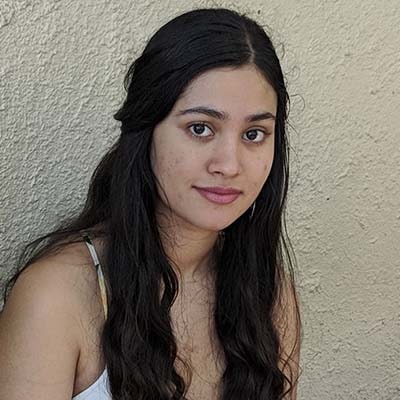Neuroscience for Nonmajors
Arula Ratnakar thinks that anyone can learn neuroscience.
Ratnakar, who is now a senior, switched her major to biology with a focus in neuroscience after starting her Carnegie Mellon University career as an architecture student. Developing an interest writing science fiction led Ratnakar to spending more time teaching herself science than on her architecture courses.  "I was doing a lot of self-studying, trying to learn the material on my own, without taking formal classes," Ratnakar said. "Eventually I realized I am a scientist at heart."
"I was doing a lot of self-studying, trying to learn the material on my own, without taking formal classes," Ratnakar said. "Eventually I realized I am a scientist at heart."
Not only did Ratnakar switch her major, she now teaches through CMU's Student College (StuCo) program, which provides undergraduate students the opportunity to teach self-designed courses. Through StuCo, both instructors and students receive credit for classes, which can be on any topic as long as it is not available through regular university offerings. For Ratnakar, teaching a neuroscience class for people without science backgrounds was an obvious choice.
"Neuroscience for Nonmajors" is the class Ratnakar says she wishes she could have taken when she was learning science on her own. Back then, she wanted to be able to understand cutting edge research techniques and technologies, but she needed to learn the basics.
"I wished I had a resource to explain things like how DNA works, basic concepts like that," Ratnakar said. "I structure my class so that students learn the fundamentals along with more complicated concepts necessary to understand the current research."
Ratnakar has incorporated some of her creative interests into assignments for her class. In one assignment, she asked her students to write an outline of a horror film based on their understanding of optogenetics, a technique in which scientists use light to control genetically modified neurons.
Other creative assignments include writing short science fiction stories, drawing comics, writing songs or even coding.
John Martins, a junior engineering student, wrote this song about the neuroscience of sleep for an assignment in "Neuroscience for Nonmajors."
Ratnakar's teaching inspirations at CMU are two of her professors, DJ Brasier and Eric Yttri. When she first switched over to neuroscience, it was Yttri's way of making difficult concepts easy to understand and Brasier's reassurance that asking questions is important that made her sure of her decision.
"When I first switched majors I was afraid I was just going to ask stupid questions," Ratnakar said. "But Dr. Brasier told us we should never be afraid to ask naive questions, because sometimes naive questions are the ones that win Nobel Prizes. That really stuck with me."